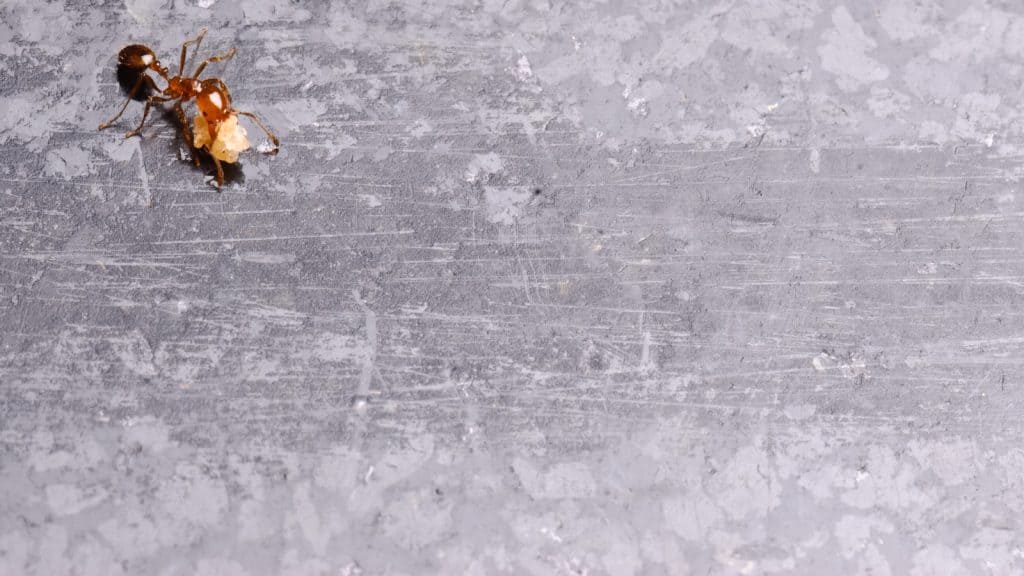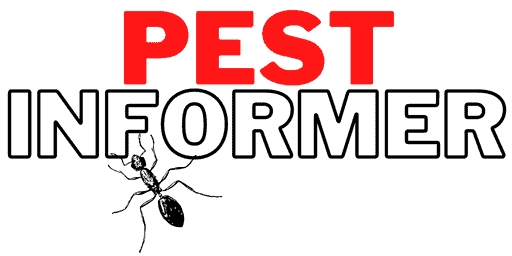There are more than 12,000 known ant species in the world but not many of them are more aggressive and fearsome than fire ants. These red devils bite hard which can cause irritation and swelling, and the effects of the sting can last for up to days.
Fire ants are omnivorous and they can virtually eat pretty much everything they find in their way. According to the Ant Pests Organization, fire ants can eat other arthropods, insects, reptiles, other ant species, amphibians, small mammals, and small birds.
In this article, I’ll discuss what fire ants eat and how they find their food in detail. It’ll help you minimize food sources for these insects to make it a bit easy to get rid of a fire ant infestation.
How Do Fire Ants Find Food?

The method that the fire ants use to find food is very safe and intuitive. First, they send a single worker fire ant out of the mound to locate the food source. The worker ant leaves a chemical pheromone trail behind.
Once the worker finds out where the food is, it signals and calls other worker ants. The mob then reaches the food source, with the help of the foraging trail, and takes it back to the fire ant mound. Then, the food is shared with other fire ant colony members, including the queen, winged males, females, and larvae.
It’s important to note that both native and imported fire ants can’t digest solid food. Their bodies convert solid food particles into liquid before the ingestion process takes place.
However, fire ant larvae can’t perform this conversion, and the worker ants convert the food into liquid before feeding the larvae.
What Do Fire Ants Eat?
Fire ants prefer food sources that offer protein, fats, and carbohydrates (in the form of sugar). They can eat anything and everything that offers these nutrients.
The fire ant diet usually includes arthropods, scale insects, reptiles, amphibians, small mammals, small birds, carrion (dead animals), and food debris left by humans.
They also feed on crops, causing billions of dollars in agricultural losses every year, and that’s why fire ant control is required to reduce losses.
Other than food debris, left by humans, that contains sugar, protein, or fat content, fire ants can feed on the following.
Plants
As mentioned, fire ants can feed on agricultural crops, and they can damage different parts of a plant. The most common plants they prefer include soybeans, sorghum, and corn. They eat and damage germinating seeds and bases of young plants to destroy the entire crop.
Other than the plants mentioned above, fire ants can also eat developing citrus fruit and okra. They target new citrus plantations by building their mounds around the base of young trees. It allows them to remove and eat the entire bark, killing the tree eventually.
Fire ants also collect the seeds of certain plants while scavenging for food. In some cases, they eat the seed, but sometimes they scatter the seeds around fire ant mounds. It results in dispersal around the entire landscape, affecting the abundance and distribution of plant species.
Invertebrates and Insects
Fire ants are effective predators, with strong mandibles/jaws, and there are different types of invertebrates they can eat. While these insects cause a lot of trouble, their vast menu offers some benefits to humans as well.
They can eat termites, ticks, fleas, chinch bugs, cockroaches, larvae, and eggs of mosquitoes. These are all pests and fire ants help reduce their populations.
In addition, red imported fire ant species can eat spiders, scorpions, and caterpillars as well. Red imported fire ants can even attack, kill, and eat other ant species, such as the tropical fire ant.

Vertebrates
There is a wide range of vertebrates that fire ants can eat, including the following.
Amphibians and Reptiles
According to studies, fire ants can attack and eat all development stages of crocodiles, turtles, lizards, and snakes. They attack these animals during (or right after) their hatching process because this is when they’re most vulnerable.
Red imported fire ants have decreased the population of Texas horned lizards dramatically by hunting down the hatching lizards. Plus, they also eat the red harvester ant, which is the major food source of the Texas horned lizard.
Mammals
Rodents are the most common mammals that fire ants eat. They specifically target those rodents that build their nests in a single place and don’t move with disturbance or weather.
The soft and moist tissues of newly born rodents attract foraging worker ants and they call the entire colony to kill and eat them.
Other than rodents, fire ants can also feed on newly born deer fawns. That’s because fawns have an intrinsic nature to hide and stay still while their mother is searching for food.
Fire ants bite the fawn’s eyes, which leads to blindness and reduces survival chances dramatically. These red devils can also feed on newly born calves in farms the same way.
Birds
Birds that build their nests near (or on) the ground usually fall victim to fire ant stings. According to the Natural Resources Institute, red imported fire ants can actually decrease the nest survival of songbirds in Taxes.
They also attack and kill other small bird species such as prairie chickens, quail, colonial waterbirds, and tricolored herons. Not only do they feed on their eggs but they can also kill and eat young hatchlings.
FAQs About What Do Fire Ants Eat
Do Fire Ants Eat Human Food?
Yes, fire ants can eat almost everything that humans do. If they get a chance to enter your home, they’ll eat everything that offers protein, fats, and sugars. They can enter your pantry and cabinets to find food and wreak havoc.
What is the Most Favorite Food of Fire Ants?
Studies show that fire ants are mostly attracted to greasy and oily food items. They like to eat anything that contains fats, carbohydrates (sugar), and protein. From food debris left by humans and plants to invertebrates, insects, vertebrates, mammals, and birds, they can eat everything.
Final Words
Fire ants are invasive ant species and they can eat anything they find in their way containing nutrients they need to survive. I hope this guide has helped you understand what fire ants eat and how they find their food.
If you have a fire ant infestation on your property, you’ll need to minimize their food option (if possible). You’ll also need to take the necessary measures to get rid of them as soon as possible to protect yourself and your family from these aggressive insects.
Recommended Reading:
